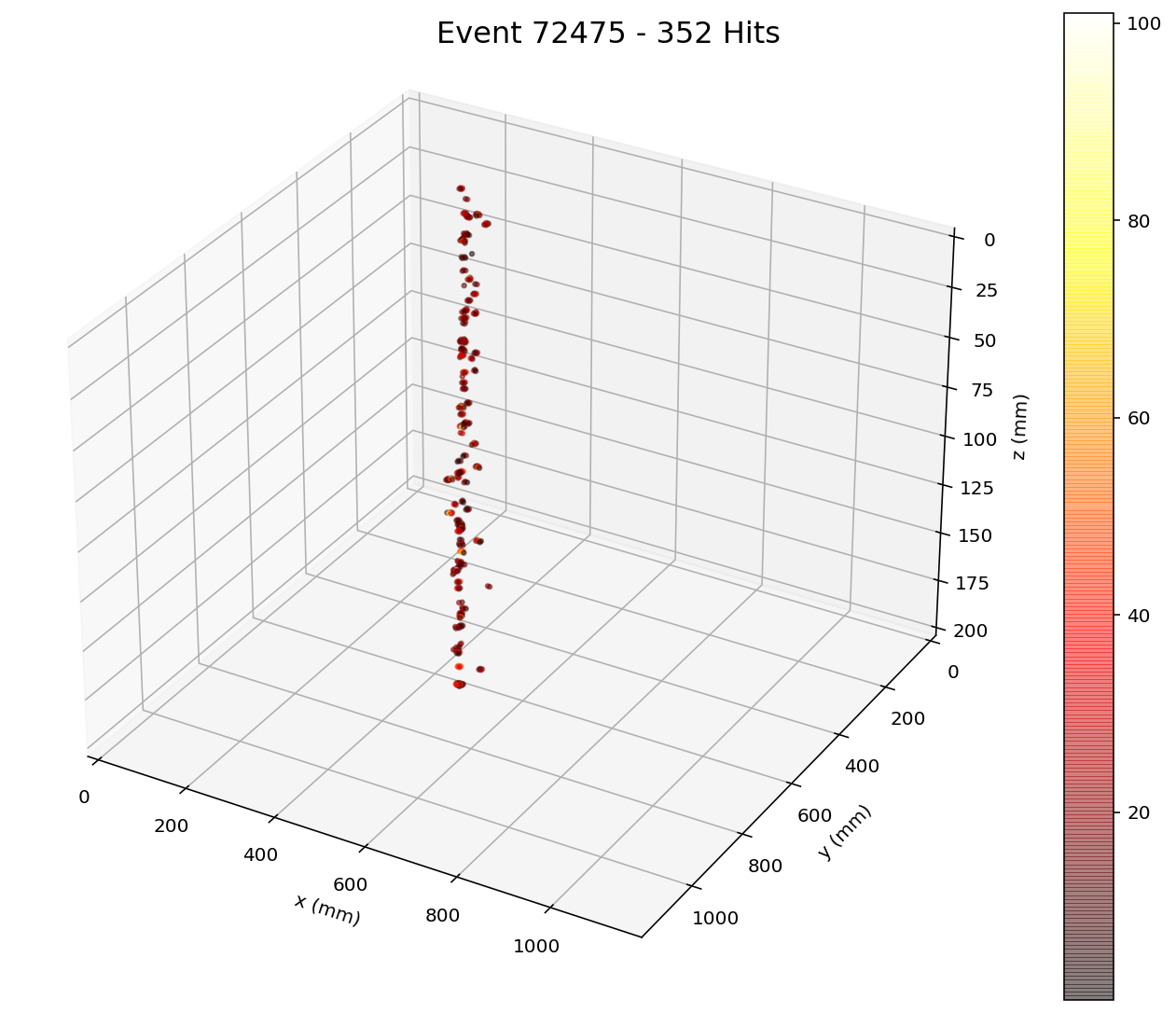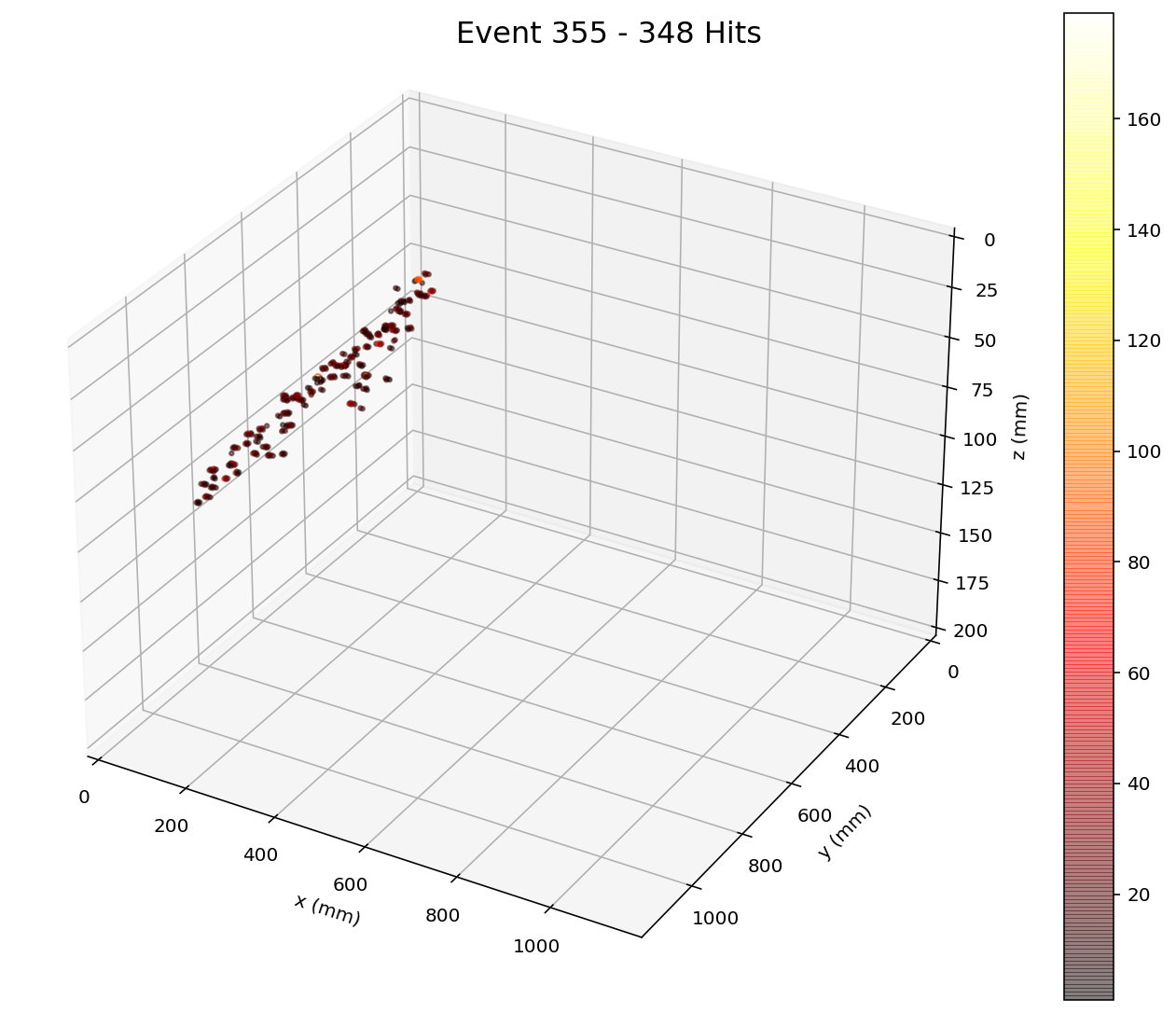ARIADNE Plus
Overview
Optical readout of dual phase liquid argon TPCs has been successfully demonstrated by the ARIADNE 1-ton experiment to be a very viable and attractive alternative to charge readout. A letter of intent was submitted by the ARIADNE group in October 2020 (View Paper). In early 2022, the 5x5 m cryogenic vessel based at the CERN Neutrino Platform was instrumented with ARIADNE technology. ARIADNE plus consists of 4 Timepix cameras imaging a 2x2 m Light Readout Plane (LRP), collecting secondary scintillation light produced within glass THGEM (Thick Gaseous Electron Multiplier) holes for full 3D optical readout. 3 cameras viewing wavelength shifted light and 1 VUV (Vacuum Ultraviolet) light directly.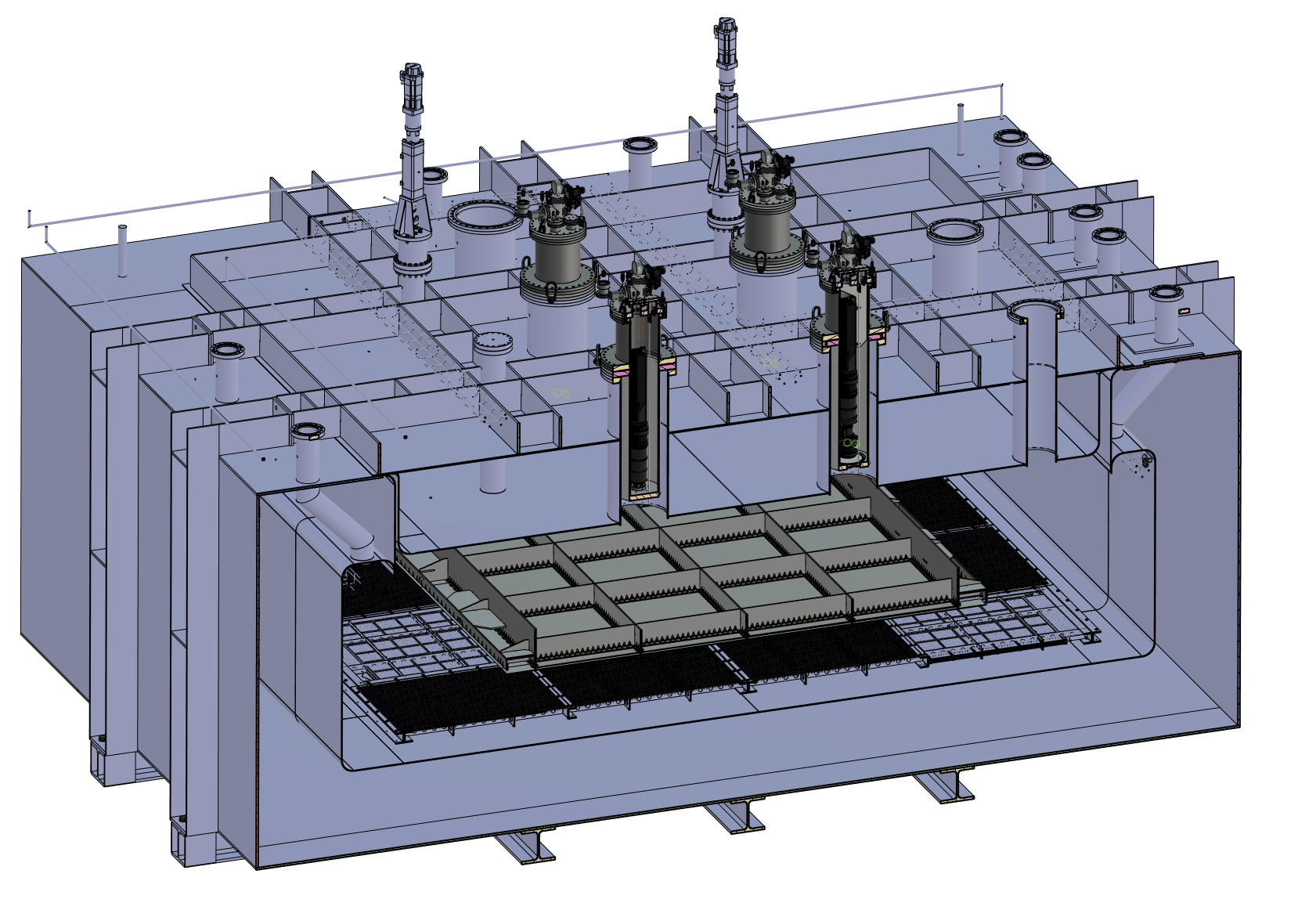
Light Readout Plane (LRP)
The Light Readout Plane (LRP) is suspended from the underneath of the vessel lid with the liquid Argon level situated between the extraction grid and glass THGEMs. An Invar support structure houses the 16 50x50 cm glass THGEMs, 12 wavelength shifting panels and a photochemically etched modular extraction grid 15 mm below the THGEMs.
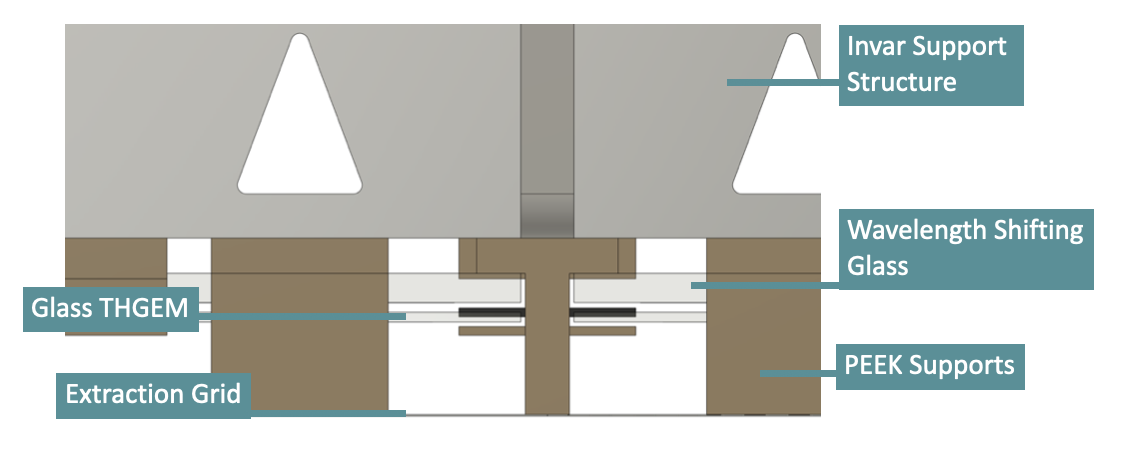
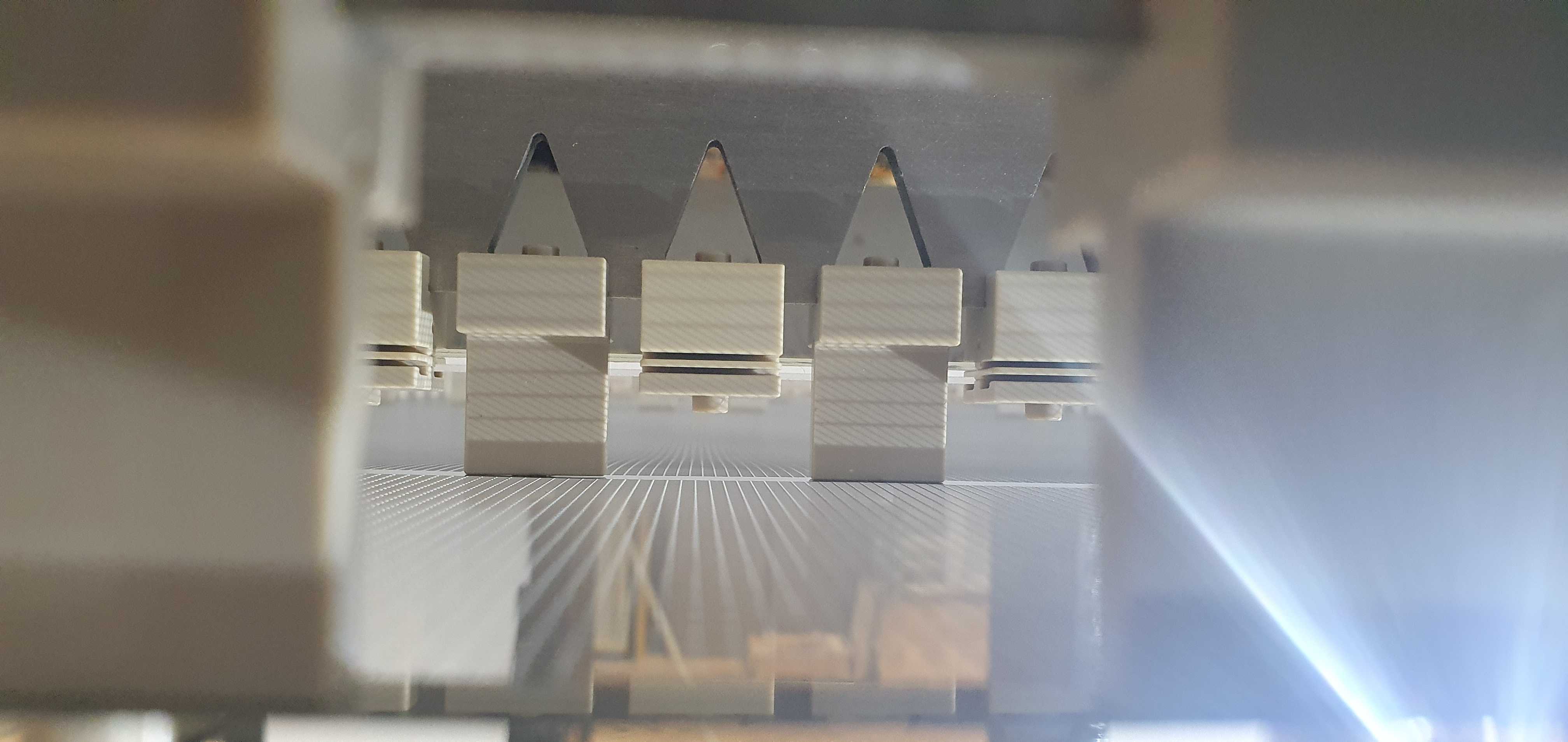
(Left) Diagram of the LRP structure. (Right) Looking between PEEK of the fully assembled LRP. (Below) Assembled LRP mounted underneath vessel lid.
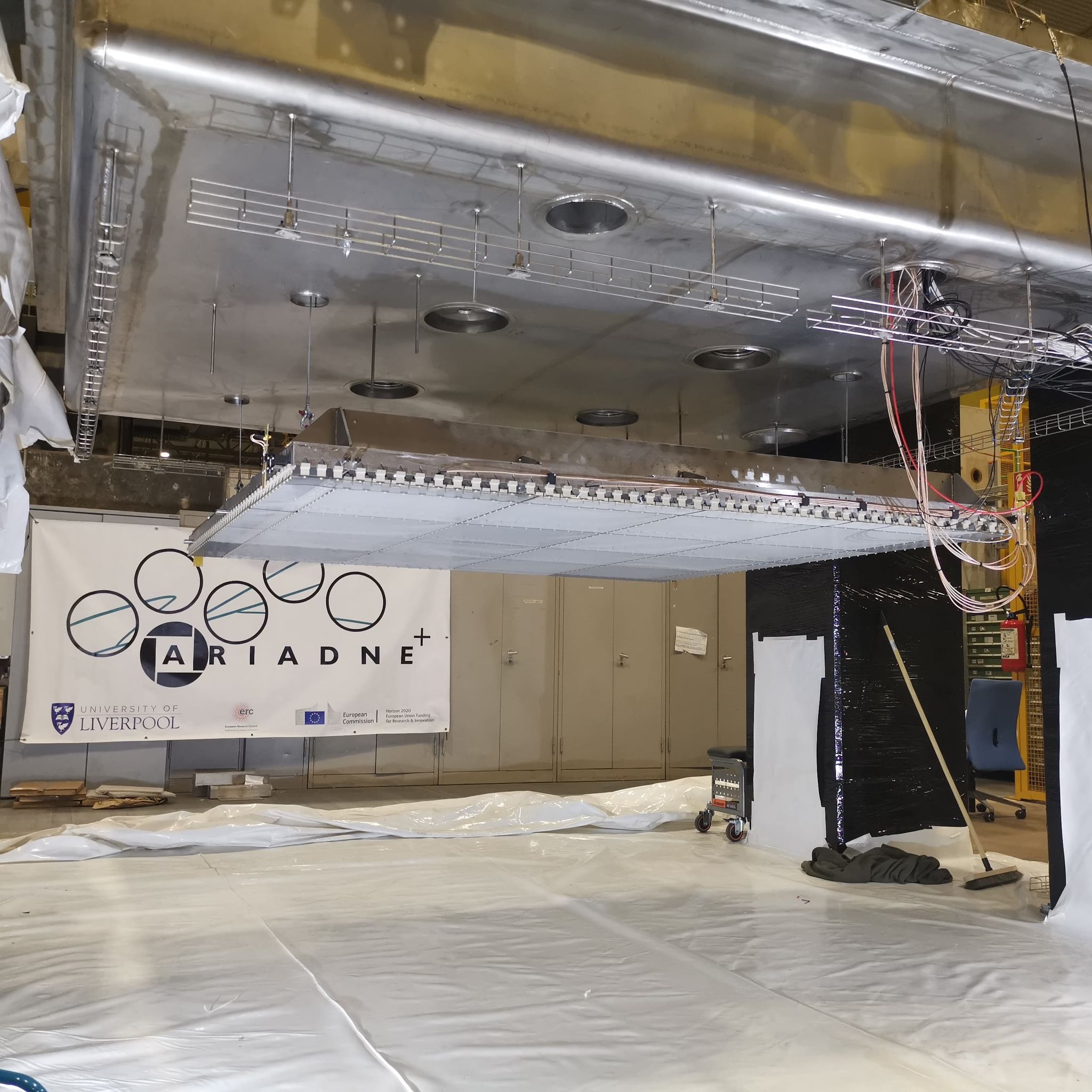
Glass THGEMs

50x50cm Glass THGEM and microscopic view
Developed within the ARIADNE group, common FR4 THGEMs were replaced within ARIADNE Plus with 16 Glass THGEMs. Produced via abrasive machining, the THGEMs can be tailored for specific properties: high stiffness, low total thickness variation, radiopurity, moisture absorption/outgassing and/or carbonisation resistance. Each THGEM is 1.1 mm thick and consists of approximately 500k 500 µm holes which have a conical 'hourglass' shape. The G-THGEM electrodes are made from indium tin oxide (ITO), with a resistivity of 150 Ω/Sq.
Cameras
One TPX3 camera images THGEM scintillation light directly removing the need for wavelength shifting using a VUV intensifier. The VUV light is focused onto the VUV intensifier's photocathode using a 5 mm diameter Magnesium Fluoride lens, from then on the optics chain remains the same.

Experiment Run
Thanks to the CERN team there was very stable cryogenic conditions during the three weeks of data collection with two refills of the vessel to ensure good purity Argon.
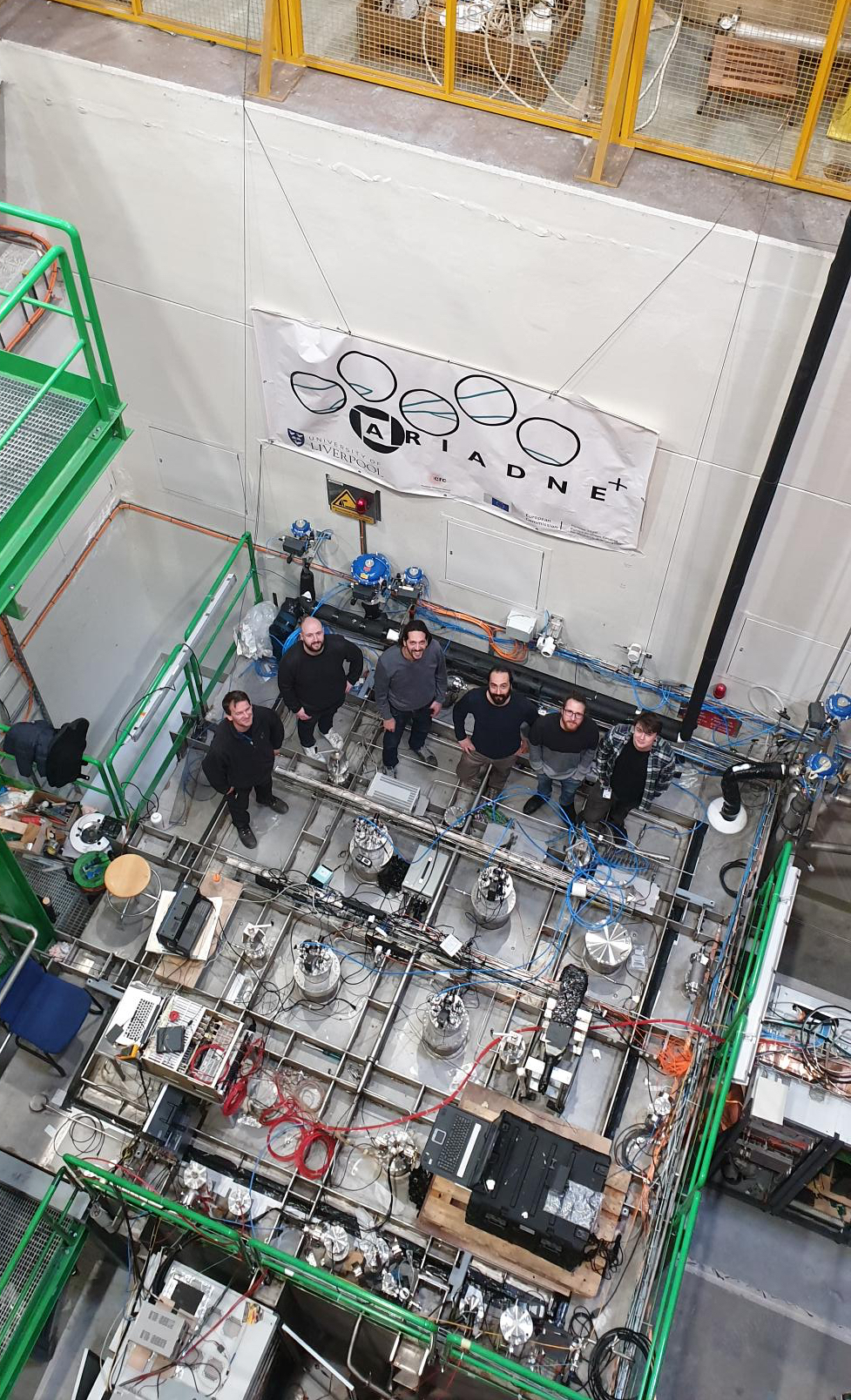
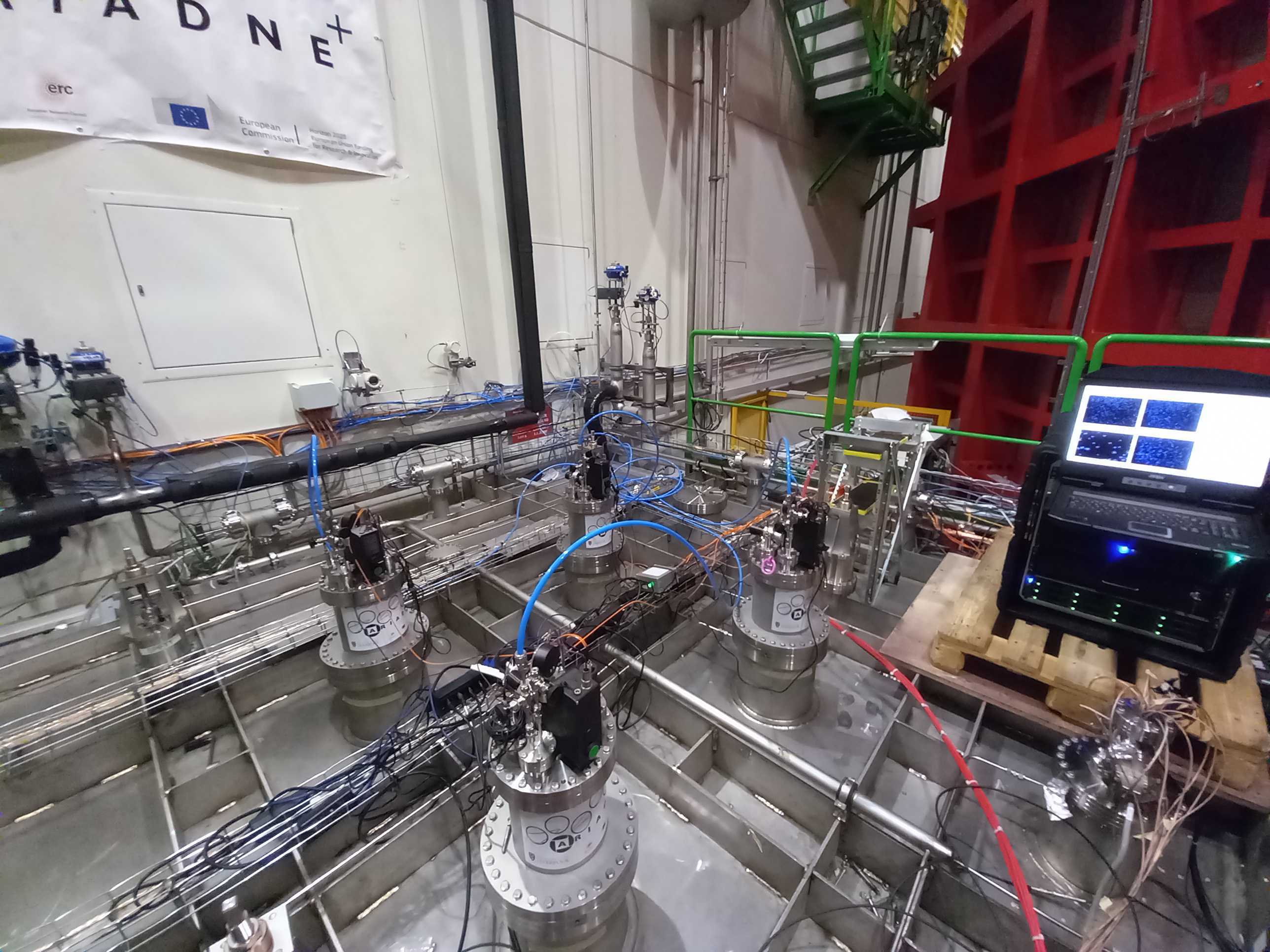
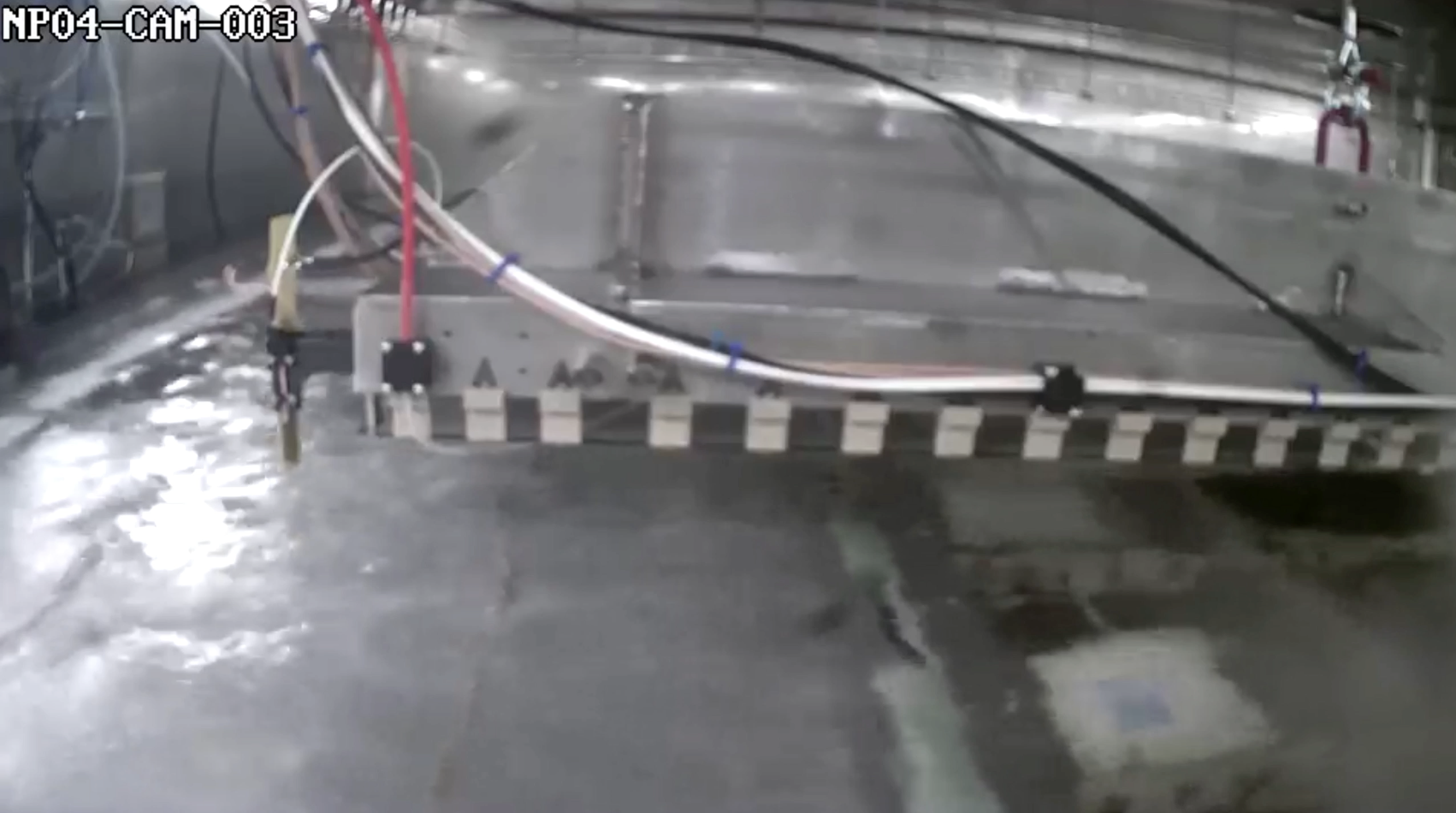
(Left) Closed vessel with custom DAQ machine on top. (Right) Camera view inside during filling.
Sample Events
Below is a small sample of the thousands of cosmic events detected. Based on the TPX3 sensor size and the area imaged, the resolution of these reconstructions is approx. 4 mm.
